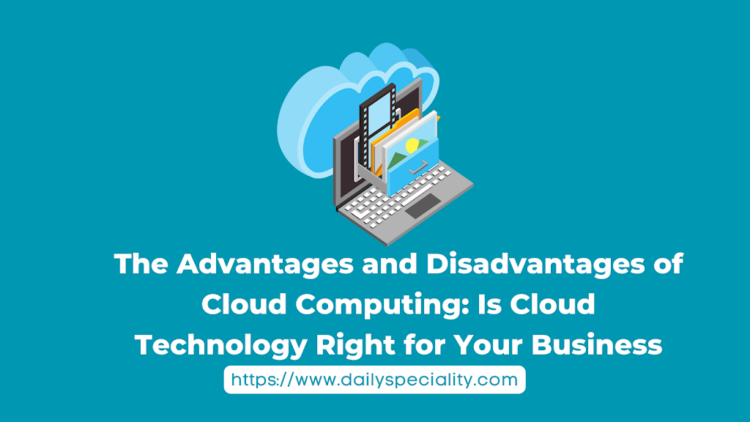
Technology now touches all aspects of modern life, including communication, employment, education, and relaxation. Its transformational power has shifted societal institutions, transformed industries, and redefined human relationships. Understanding the impact of technology on society necessitates an examination of how it has changed several facets of life, including communication, économie, education, healthcare, culture, and the environment. Cet article delves into these topics, demonstrating both the beneficial and negative consequences of scientific growth.
1. Communication & Connectivity
One of the most notable impacts of technology on society has been the communication revolution. From l’introduction du téléphone à la hausse des social media platforms, technologie a impacté comment les personnes interagissent avec l’autre.
Positive impact : The digital era has enabled instant contact around the world. Social networking platforms, email, messaging applications, and video conferencing capabilities have enabled people to stay in touch regardless of their geographical location. This has enabled people to maintain ties, prendre part professionnelly, et exchanger des idées on a worldwide scale.
Social media has also empowered disenfranchised communities by providing outlets for them to express leurs idées et concerns, often leading to social and political change. Movements like MeToo and Black Lives Matter have grown in popularity because of the power of the World Wide Web.
Negative impact : but this connectivity has consequences. Social media can create echo chambers, in which people are only exposed to material that supports their pre-existing opinions, promoting polarization. The propagation of misinformation and deception has aussi become a major worry, as technology allows for the rapid broadcast of inaccurate or misleading information.
Furthermore, the rise of online interactions has limited face-to-face contacts, potentially affecting the breadth and value of partnerships. This change to virtual contact has raised worries about behavioral health, avec des recherches associant extreme social media use avec anxiety, despair, and loneliness.
2. Economic Growth and the Job Market
Technology has transformed the global economy by spurring innovation, improving productivity, and establishing new industries. The digital economy, fueled by the growth of the World Wide Web, mobile technology, and automation, has transformed how businesses operate.
Positive impact : robots and robotics (AI) helped streamline industrial processes, increasing industry efficiency. This has resulted in the emergence of totally new industries, that include e-commerce, developing applications, and online advertisement, which have created millions of employment worldwide. Furthermore, technology advancements have contributed to global trade cheaper and easier, allowing small enterprises to enter foreign marketplaces.
The gig economy, aided by platforms such as Airbnb, Uber, and others and Upwork, has provided individuals with flexible job options, allowing them to earn money on their own schedule. This transition has fueled entrepreneurship, and people can now easily start firms or provide freelance services online.
Negative Impact: On the other hand, automation has eliminated many conventional employment, especially for manufacturing, retail, and several other industries that require manual work. While technology opens up new options, it replaces certaines professions, raising concerns about secured employment and increasing income inequality. Workers without the necessary skills for high-tech occupations may struggle to obtain work, increasing the digital divide.
Furthermore, while the gig economy provides flexibilité, it typically lacks the assurances and benefits that come with regular jobs, such as healthcare, plans for retirement, and job stability. This development raises worries about the rights of workers in a technologically based economy.
3. Education & Learning
The development of computer technology has had a profound impact on l’éducation, affecting how children learn and instructors educate. Learning has become plus accessible et participatory because of technological advancements, such as online courses and educational applications.
Positive impact : Computer has democratized education, causing learning resources available to people all over the world. Khan Academy, Coursera in 2011, and EdX are examples of online systems which offer courses on a variety of subjects, allowing students to learn and build skills from anywhere without an Internet connection. This has proved especially useful in distant places or in underdeveloped countries where possibilities for excellent education could be limited.
Furthermore, interactive tools such as virtual reality, aussi connue comme VR, and AR (augmented reality) improve the learning procedure by creating immersive settings in which students can explore complicated subjects such as science, history, and artwork.
Negative impact : but l’increased use of electronic equipment in education has prompted questions about equity. The digital divide, or the difference across those that possess use of technology in comparison to those who do not, has the potential to worsen current educational inequality. Students from low-income households may lack access to the gadgets and internet connections required for online learning, putting them at a disadvantage.
Furthermore, excessive screen usage has been related to unfavorable health outcomes for children, such as eyestrain, sleep disruption, and decreased physical activity. While technology creates novel opportunities for learning, it is critical to balance its use avec traditional teaching approaches in order to provide a well-rounded education.
4. Healthcare Innovations.
Technological advancements have greatly benefited those in the healthcare sector, from healthcare study and testing to healthcare and treatment.
Positive impact : telemedicine, wearable health technology, and AI-powered diagnostics have transformed healthcare delivery. Telemedicine enables patients to have discussions remotely, thereby boosting access to medical treatment, particularly in rural or underprivileged regions. Wearable gadgets, comme smartwatches et fitness trackers, permettent aux individus de remotely monitorer leur wellness in real time, ce qui permet de prévenir certaines pathologies à l’early identification.
In the field of medicine, machine learning and artificial intelligence (AI) are being used to evaluate massive volumes of data, resulting in advancements in disease identification, the creation of medicines, and personalized therapy. Automated surgeries and minimally-invasive treatments have streamlined patient outcomes by shortening recovery times and minimizing complications.
Negative impact : however, integrating technology into healthcare poses obstacles. Privacy and security issues are crucial, as sensitive health information is frequently held digitally. Cyberattacks on healthcare organizations may compromise patient information, resulting in identity theft or various kinds of exploitation.
Furthermore, the exorbitant expense of sophisticated medical technologies might exacerbate the disparity in healthcare access. Not everyone can afford the most recent therapies or equipment, which may result into unequal availability of quality care.
5. Cultural shifts, including social norms.
Technology has a huge impact on culture, shaping the way individuals interact, consume media outlets, and interprètent le monde.
Positive impact : The web has allowed the global interchange of ideas, resultant in cultural fusion and more exposure to many ways of life. People have the ability to interact avec varied ideas, artwork, and musical performances from all around the world, resultant in a more interconnected planet. This has helped to break down boundaries and improve understanding across différentes cultures.
In the meantime, technology has created new types of entertainment, ranging from gaming and online streaming services to augmented and mixed reality experiences. These developments have broadened the scope of creative expression, enabling makers and artists to reach a larger audience.
Negative impact : but there is fear that technological innovation is contributing to cultural uniformity, as global platforms frequently support dominant cultural narratives above local ones. The growth of media from the West and consumer habits can eclipse local customs and languages, resultant in the loss of cultural variety.
Furthermore, the regular use of curated and idealized information on social media was related to excessive beauty norms and materialism, exacerbated by societal norms and mental health difficulties, particularly among young people.
6. Environmental implications.
While science has the ability to help solve environmental problems, it also has serious environmental effects.
Positive impact : Technology allowed the development of environmentally friendly alternatives, including solar power, electric vehicles, and appliances that are energy-saving. Clean energy innovations, such as wind and solar energy, are contributing to the reduction of emissions of greenhouse gases and the fight against climate change.
Furthermore, technology has been employed to monitor and preserve the environment using technologies like satellite imagery and data analytics. These technologies improve natural resource management and allow for the prompt identification of environmental problems.
Negative impact : but the manufacturing and disposing of electronic equipment contributes to environmental damage. E-waste, which comprises discarded cell phones, laptops, and other electronic gadgets, is a major environmental risk due to the harmful compounds used in leur manufacture. Furthermore, the energy usage of server rooms and bitcoin mining activities has generated worries about their environmental impact.
Conclusion
The effect of technology on culture is multifaceted, with both beneficial and bad consequences. While it has altered dialogue, financial markets, schooling, health care, lifestyle and culture, and the natural environment in a variety of ways, these improvements have also introduit new difficulties that must be handled. As society évolue avec les avancements en technologie, it is critical to strike a balance between invention et the safeguarding of human values, telles que justice et sustainability.





